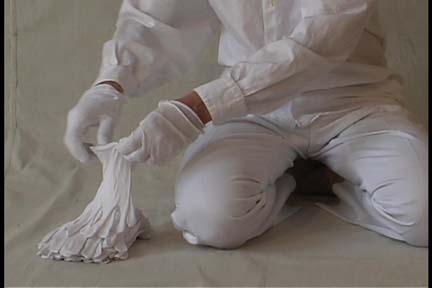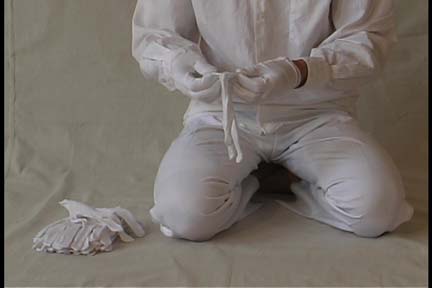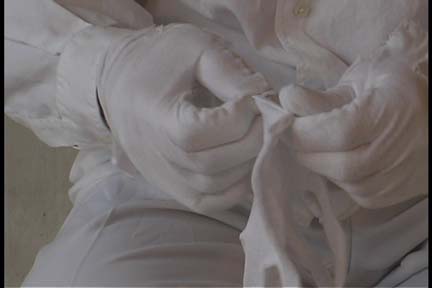White Boxes: Ryan Amundson at Washington Galleries
Julia Durst describes Ryan Amundson's installation "Accepting the Rhythm" at Washington Galleries in Duluth.



“Accepting the Rhythm” by Ryan Amundson, at Washington Galleries, 315 N. Lake Ave.,
Duluth, MN. 218-727-4201. Through August 1. Gallery open Sat and Sun, 1-5 pm.
Ryan Amundson claims he can’t draw. Instead, the artist fills vacant rooms with wooden constructions and ambient light, explaining his work in the astute art geek vernacular usually reserved for triple-MFA academics, not former audio engineers from the Midwest. By creating environments instead of objects, Amundson aims for what he calls “a full sensory exploration.” His latest work, “Accepting the Rhythm,” takes over Washington Galleries this month.
Amundson’s first installation (“Red,” 2002) filled the gallery with suspended luminous boxes, garnering praise and even appearing on the cover of If Thousands’s Yellowstone album. His sophomore effort proves more complex in its construction and concept. Amundson describes it: “There will be four life-sized coffins on eight-feet tall stilts. A ladder will lead up to each coffin, and there’ll be a hole at the head to look in. The first one will have a film playing inside…” Viewers will see something different in each coffin, though Amundson declines to disclose exactly what.
First imagined last December, the idea for “Rhythm” incubated until February when Amundson developed plans for coffin construction. He began building in March, using salvaged wood for the exteriors. By late April, focus shifted to the interiors as Amundson decided to incorporate symbolic white gloves throughout the piece. The artist started planning the film, relying on the considerable talents of Sarah Browne and Jeff Holden of Hillside Productions. Their recording of Amundson in all white interacting with gloves on a white set will play in the first coffin. The minimalistic white typifies Amundson’s style while its blankness permits viewers to project themselves into the piece.
“Accepting the Rhythm” addresses universal issues but originates from a deeply personal place. Amundson admits he grieves the loss of a relationship in the piece, but says the idea also came from some heavy questions he grappled with after he started working at the Benedictine Health Center. Dealing with mortality regularly prompted him to ponder issues of euthanasia, pain management and grief. When asked his thoughts on the way people rationalize tragedy (religion, philosophy, science), Amundson pauses before replying. “Philosophy is just a way of translating reality, just a way of searching outside yourself for ways to fix yourself. No one can do that better than you yourself.”
Amundson got serious about sculpture only about three years ago after building a large-scale mobile for his newborn daughter. Lacking a formal art education, he capitalized on woodworking skills imparted by his carpenter dad. The artist’s distinct aesthetic developed quickly: wood and hemp rope in subdued earthy tones formed into boxy structures. His preference for installation also emerged early, perhaps spurred by the grandeur of his ideas. They require whole rooms to breathe, but remain personal. “Accepting the Rhythm” succeeds because Amundson’s vulnerability perfectly tempers the macabre coffins and heavy metaphors. He masters space and content. Good thing he can’t draw.
This piece appeared initially in the Ripsaw, and appears here by permission.